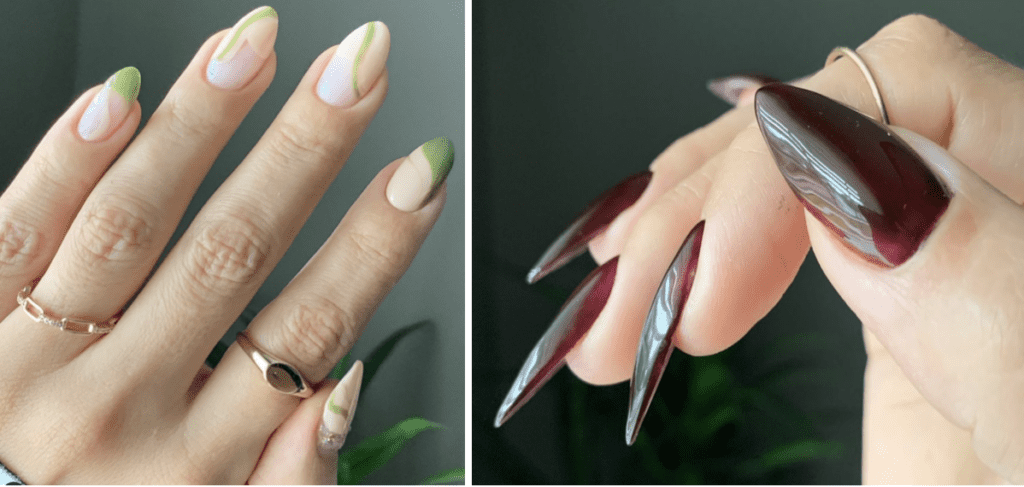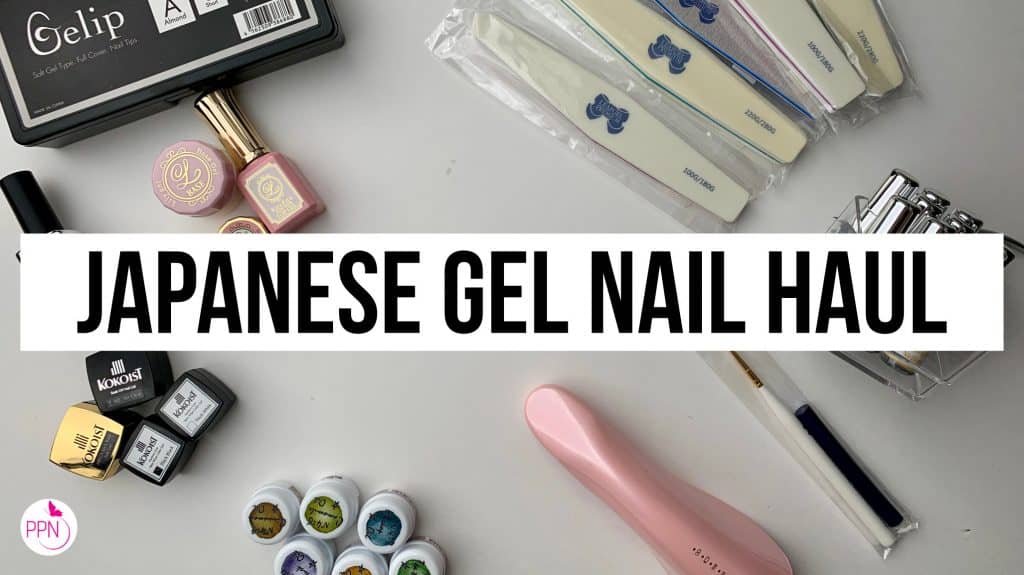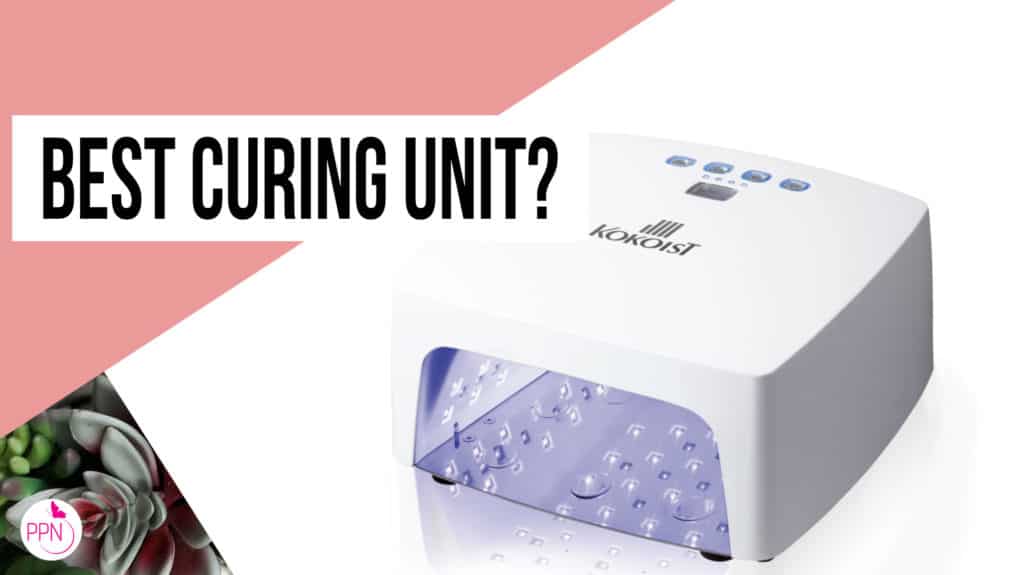What Are Gel Nails?

Gel Nails, what are they anyway? What is nail gel?
Are gel nails and acrylic nails the same?
Were you ever the victim of liquid and powder nails being offered in salons as gel nails?
In today’s topic, I will be giving you 3 defining characteristics of gel nails so that there is never confusion again on what these types of nails really are.
Every time I host a certification training (Kokoist, Leafgel, Vetro) the first thing we go over is … What are gel nails? And while we can get super technical, my goal is to always simplify a topic so that the student is confident in the way they explain or understand the concept. In this case gel nails.
Here are the 3 defining characteristics:
Gel nails refer to a finished plastic nail enhancement made up of “nail gel”.
So what we need to define, is what is nail gel? As gel nails refer to the finished product of this material.
1. Nail gel is… #1 A liquid gooey formula derived from resin.
Resin is quite viscous and has the consistency of honey.
In order to make this gooey substance manageable, you need a monomer. In the gel nail realm, there are many, but two popular ones are HEMA & ethyl acetate. What monomer a gel nail company opts in for can depend on budget, end-product-result, or wanting to make a more gentle less allergenic formulation.
2. Nail Gel is… #2 An oligomer.
Gel mainly consists of oligomers, photoinitiators, and additives.
In what we commonly know as “acrylic nails”, we mix our acrylic formula at the table just before applying it to the natural nail. That is why ratios in acrylic application are super important. Too wet or too dry, will simply yield bad results. The powder in acrylic nails is called a polymer. The liquid is called a monomer.
But for us gel nail specialists, we work with an oligomer product. In an oligomer, molecules consist of a few monomers joined into short chains. Our chemical blending and proportioning happen in the manufacturing facility, and there is no mixing required at the table prior to applying on the natural nail.
Additives in a gel nail product can include glitters and pigments, or other ingredients to create an effect in the gel… think, matte topcoat, cat-eye effect, etc.
Lastly, the most important component in a gel is the photoinitiator. Photoinitiator allows the gel nail product to harden, or polymerize.
New gel nail technology uses two types of photo-initiators in order to make the gel nail products compatible with just about any curing unit. With that being said, few companies are quite strict and highly recommend using their calibrated curing unit with their gel products for the best results. Check with your favorite brands for their recommendations.
Next.
3. Nail Gel is… #3 A nail product that requires UV light to polymerize, AKA harden.
As you already have learned one of the components of gel is a photoinitiator. Photoinitiator molecules react to ultraviolet light typically within the spectrum of 365 or 405, and I believe this is plus or minus 10.
And, it’s up to the manufacturer to decide which photoinitiator in what spectrum they decide on adding and why. But again, new gel nail technology now includes both in their formulation.
What would happen without a photoinitiator in gel?
Without photoinitiator molecules in a gel formula, the gel would remain in a liquid state. Photoinitiator causes polymerization, or the liquid gel to harden. Meaning the oligomer is now cured gel, and it transitioned from oligomer to polymer.
In addition to these 3 defining characteristics gel nails are classified into a hard or soft gel. Hard gel is used to build and sculpt long nails as well as to create top coat gel, as the clarity of hard gel is typically high.
Furthermore, a hard gel is non-porous and therefore cannot be soaked off with solvent (such as acetone). With that being said, hard gel can be used to create colors. Only a few companies offer hard gel colors.
On the other hand, soft gel, as its name suggests, is usually softer. It is also typically thinner. There used to be a time when building and sculpting with soft gel was not very popular. But now with the technology of builder in a bottle and strong soft builder gels. That is no longer the case. You can do all of your gel nail services using soft gel only! That is the basis of this channel, and if you haven’t checked out my free masterclass, do check it out using this link.
As opposed to hard gel, soft gel, which is also known as soak-off gel, can be broken down and removed from the natural nail plate with acetone.
Soft gel is typically a universal fit for all nail types. And it can do everything hard gel can and in my honest opinion a little more. It is my favorite out of the two.
To recap, gel nails are nail enhancements that are finished with a nail gel that is:
- Derived from a gooey substance called resin
- Composed of oligomer, photoinitiator & additives
- Requires UV light for it to fully dry or cure
Thank you so much for joining me today, See you next week, bye for now.
These blogs are copyrighted material and any use of this blog is not permitted without written concern first. Some of these blogs contain affiliate links that provide us with a small commission when qualifying purchases are made. Thank you for your support that helps us to continue creating valuable resources and content like this.


